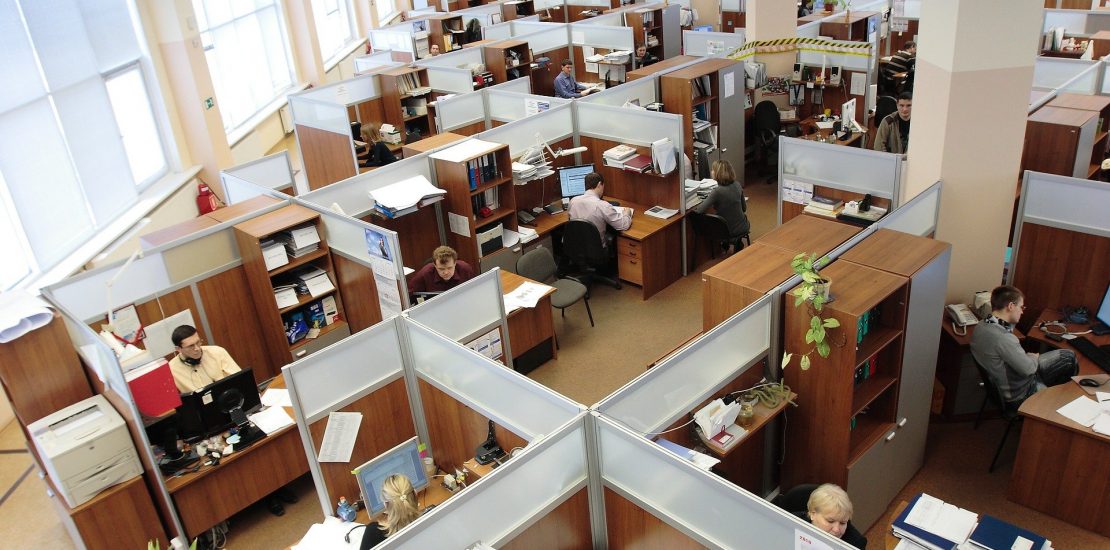Office Designs for People
- July 6, 2020
- Posted by: Philip Struble
- Category: Uncategorized

Scott Adams, the creator of Dilbert, has a weird relationship with the office environment of today. Specifically, it is his understanding of the use and abuse of cubicles.
Office Designs
When we moved into our current office space, we had the choice of moving into an office full of cubicles left from a previous tenant. The staff was given a choice to move into the existing cubicles, or replace them with the desks and table from our last office.
Moving into cubicles was unanimously the choice.
Several years later, that were punctuated with inefficiencies, lost efficiencies, and complaints of unproductive staff, we had the opportunity to ask again if cubicles were still the preferred office design.
No one supported keeping the cubicles.
Our current layout is mixture tables, desks, and file cabinets all dependent on the job description of each specific employee, supplemented with what they wanted that, in their estimation, would make them the most productive.
Although everybody has the same footprint, everybody’s space is different.
Immediately, productivity went up, collaboration is continuous, and the abuse of internal socializing is no greater a threat than with the cubicles.
And everyone seems happier.
Advice on Office Designs
Here are several strategies to create a successful office design.
- Give people choice and control. Research has found when people have the option of where to work, they are more highly engaged and highly satisfied at work.
- Ensure people have plenty of variety. The best offices aren’t made up of drab cubes or long rows of open workstations. Instead, they are places with both open and enclosed spaces, both formal and informal areas, and spots where people can work alone or together.
- Empower people to make their space their own. Start with designing a space where people can choose their own spot to work but go even further by giving teams places to display their work in progress, hold impromptu meetings, and work through issues.
- Support multiple ways of working. A great workplace supports well-being by facilitating all kinds of work—focused, collaborative, and learning-oriented.
- Design for nature and stimulation. A workplace that supports well-being provides interesting and stimulating environments with color, texture, daylight, and views. Since most of us spend the vast majority of our time indoors, we must make it as healthy and meaningful as possible.
The Bible
Proverbs 24:30-34 says.
“I passed by the field of a sluggard, by the vineyard of a man lacking sense, and behold, it was all overgrown with thorns; the ground was covered with nettles, and its stone wall was broken down. Then I saw and considered it; I looked and received instruction. A little sleep, a little slumber, a little folding of the hands to rest, and poverty will come upon you like a robber, and want like an armed man.”
The vineyard of first-century Judea is like our office environment of today. Nearly anyone can gain an appreciation of a business by visiting and observing its office in action. The hustle and bustle, desks and tables full of important and actionable information, and people conversing, arguing, and planning.
Or not.
The vineyards of old had the same needed activity—pruning, burning, gathering; conversing, discussing, and planning.
Or not.
As business leaders, we need to make sure our office environments are conducive to activity that produces positive results. Or we will go the way of the sluggard (and possibly the way of the cubicle).
